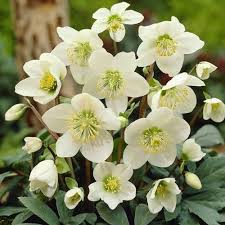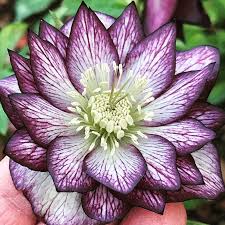Helleborus - The Christmas Rose
(Hel-lee-bor-us) Christmas Rose or Winter Rose
Helleborus is a simple and yet beautiful flower. It is widely used in cottage designs with the beautiful burgundy shades filling in the style. Being part of the ranunculi family indicates the intricacies of the Helleborus petal abilities. They can be a simple 5 petal, bowl shaped flower to a complex display of many layers and patterns.
History
Helleborus is a native to Southern Europe and Western Asia and is widely used in winter floristry in Scandinavia. Helleborus is poisonous is eaten and in medieval days is was though too sure madness and used a deterrent to ward off witchcraft and evil spirts.
Uses
Generally, Helleborus is used in only wired arrangement and not in corporate designs, as they will droop and dry out in air-conditioning or heating. Helleborus can be used in bouquets if the proper care is taken. The dramatic centres of the Helleborus is very effective in bouquets and can be used to highlight and pull the colours together.
Care & Handling
When using Helleborus in floristry they need to be cut or purchased when the flowers are half opened and recut the stems and place in water as soon as possible.
The heads can be ‘bathed’ or fully immersed in water for up to three hours, this will ensure the completely firm up. Ideal when using in bouquets.
Helleborus come in a range of colours including white, pink, burgundy, green, purple, cream, purple/black and yellow and last for approximately 7 days when cut.
Can be kept in a cool room at 2-5°C.
Five Fun Facts
It is not known where the name Helleborus comes from. It is believed it could mean ‘Deadly Food’ or Hellas= Greece and Borealis= North.
It is often planted near the doorways of homes to ward off evil spirts.
The romantic flower meaning is succour for anxiety.
The German name for Helleborus is ‘Nieswurz’ meaning ‘sneezewort’ in English! This comes from the fact that when the Helleborus flower is ground into a powder it induces sneezing.
The roots of the Helleborus niger are used in human medicine to treat cardiovascular problems.



